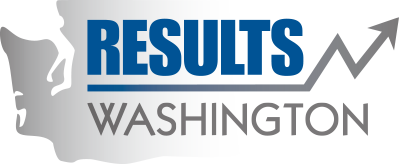Archived: Average annual treatment of forested lands for forest health and fire reduction
Forest health treatments reduce crowding and remove weaker trees. This reduces the risk of wildfire damage and increases the remaining trees' ability to resist or recover from drought, wind or ice storms, wildfire and forest insect or pest activity into the future. Investing in forest health treatments protects natural resources, creates important jobs in rural areas, and reduces the costs and risks to public safety from wildfire.
Decades of fire suppression, past forest management practices, and lack of recent management action have created overcrowded, fir-dominated, vulnerable forests with many dead and diseased trees that are at risk of severe wildfire and insect and disease problems. Nearly 2.7 million acres of eastern Washington forestland requires active management or disturbance to create structures more resilient against insects, diseases and wildfires (Haugo et al. 2015).
A warming climate is likely to increase these risks, particularly in eastern Washington, in coming decades. Projections for the Northwest indicate that increased summer temperatures and decreased summer precipitation will increase the area burned each year across eastern Washington by more than 300 percent by 2100, with some areas increasing as much as 500 percent compared with the area burned in 2000. The severe wildfire seasons Washington experienced in 2014 and 2015 also can be significant contributor to overall greenhouse gas emissions. The 2015 wildfire season emitted an estimated 24 million metric tons of CO2 equivalent. This represents 26% of Washington’s 2012 human generated carbon emissions, second largest source after transportation.
Although many forest landowners recognize these problems, it can be difficult to restore forest health and wildfire resistance because, in general, the trees that need to be removed are small or damaged and there are few products or markets that will buy this material and help pay the treatment costs. The costs to accomplish this work far exceed the available funding.
The Washington Department of Natural Resources (DNR) has recognized the need to increase forest health treatments. From 2004-2007, Washington’s forest health law was updated and DNR’s authorities and capacity to provide forest health services and assistance were increased. Initially, the Forest Improvement Treatment “FIT” authority, a special method to sell low value timber products to accomplish work and improve forest health on State Trust forest land was implemented. The FIT strategy enables state land managers to restore forest health on low value or previously damaged areas.
The results of several recent years using that program in eastern Washington are shown in the above chart. These accomplishments are below the target of 10,000 acres of treatment per year (DNR FIT Strategic Plan,2008) but reflect the expense and challenge of accomplishing this work,especially through the recent national economic crisis.
Additionally, in 2012, with the assistance of the Forest Health Technical Advisory Committee and using his authority to be an advocate for forest health on all lands in Washington, the Commissioner of Public Lands Peter Goldmark declared two Forest Health Hazard Warning Areas to be high priorities for forest health treatments in Okanogan and Ferry counties and Yakima and Klickitat counties. Because of those declarations, special effort(mailings, educational workshops) have been made to alert and train 10,000 landowners about forest health management options and to acquire additional funding for management activities. In the 2013-15 biennium, $4 million was acquired to increase forest health treatments on state and private forest land in eastern Washington, primarily in the Forest Health Hazard Warning Areas. In the 2015-17 biennium, $8.2 million was allocated by the Legislature to increase forest health treatments on state and private forest lands in eastern Washington.
In 2014, DNR submitted a report to the Washington State Legislature entitled Eastern Washington Forest Health: Hazards, Accomplishments and Restoration Strategy. This report follows instructions from the Legislature to the Washington State Department of Natural Resources (DNR) to report on forest health hazard reduction treatments conducted on state, private, tribal and federal lands from fiscal year 2010 through fiscal year 2014; estimate forest restoration needs across land ownerships from fiscal year 2015 through fiscal year 2020; and recommend forest health hazard reduction treatments in eastern Washington through fiscal year 2020.
An analysis by The Nature Conservancy and the U.S. Forest Service identified nearly 2.7 million acres of eastern Washington forest land requiring some sort of active management or disturbance to create forest structures more resilient against insects, diseases and wildfires. Tree thinning,harvest, and brush removal using hand crews or mechanized equipment are the most widely used treatments to reduce forest density and remove inappropriate tree species. Prescribed fire also is a restoration tool employed by some landowners to manage species composition and fuel loads. On average over the past five years, major landowners and managers conducted a mix of mechanical harvest and hazard reduction activities on approximately 145,000 acres annually and prescribed burning on 18,000 acres.
Every forest landowner is encouraged to maintain their forest lands in a healthy condition in order to meet their individual ownership objectives, protect public resources, and avoid contributing to forest insect or disease outbreaks or increasing the risk of uncharacteristically severe fire. People who want to view recent annual forest health reports,learn more about basic concepts of forest health and see the Forest Health Hazard Warning Areas can use: http://www.dnr.wa.gov/ForestHealth
Landowners who want to learn methods to steward their land for a productive, sustainable future can use the resources of the DNR’s Small Forest Landowner Office which includes background and links to contact information for the DNR’s Forest Stewardship program: http://www.dnr.wa.gov/sflo and http://www.dnr.wa.gov/programs-and-services/forest-practices/small-forest-landowners/forest-stewardship-program
